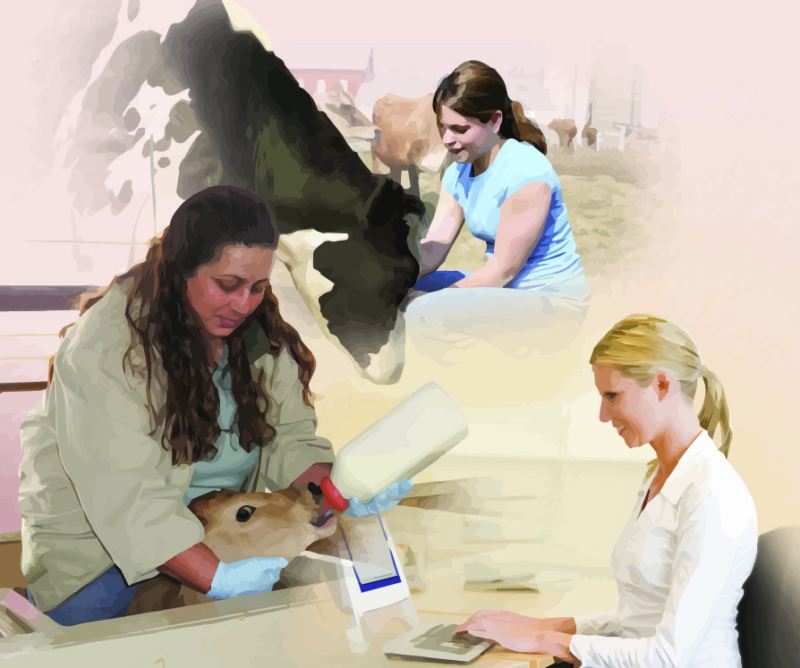Farm life is the best life, am I right? If you grew up on the farm or are raising kids on the farm, you know the farm is a wonderful place for children. They learn independence, responsibility and so much more. However, farms are also workplaces. As farmers, we know farming can be dangerous and safety precautions need to be put into place. It wasn’t until I became a mother that I realized how many dangers on the farm there are.
When I was pregnant with my twins, I recall thinking, “Farming with kids in tow won’t be that hard. They will have plenty of space to play as I work, and it will be business as usual.”
What a joke. Danger is everywhere.
My role on the farm has significantly changed since having children. I spend more time with my eyes on kids and less time with cattle. Sometimes, this gets to me. Am I still a farmer? Am I still valuable? Am I doing enough for the farm? Then I think back to something my dad told me when I was a teen who thought she was too cool to feed calves.
He said, “Caring for the calves is the most important job on the farm because these calves are the future of our farm.”
I guess you could say that is what I am doing now but with tiny humans. I wasn’t expecting such a change, but it is a change that is 100% necessary at this time. Keeping toddlers safe on the farm is a full-time job. Even with supervision, there are various things that could go wrong at any time.
Farms are a rare combination of workplace and home. Because kids grow up “at home” on the farm, we may not think to give them the same kind of safety training we expect in the workplace.
According to the National Ag Safety database, accidents kill more children than disease, kidnapping and drugs combined. Each year, an estimated 300 people under age 19 die and approximately 24,000 (65 every day) are seriously hurt on our nation’s farms.
This is an alarming number. In an effort to reduce this number, I am sharing some helpful farm safety tips for children.
Toddler age
- Supervise at all times. Pro-tip: Consider a choke collar. OK, that one is a joke, but don’t think I haven’t thought about it from time to time. An actual tip? Fasten jingle bells on the child(ren) so you have ears on them at all times.
- Clearly communicate with other adults when child supervision is changing. Don’t ever assume someone is watching a child. Get a clear confirmation. Pro-tip: Use the cockpit safety measure. When pilots make a change in command, they say, “Your airplane,” and the other pilot responds with, “My airplane.” Do the same with children. “Your Abbie.” Wait for other adult to respond with “My Abbie.”
- Fence off and lock hazardous areas.
- Keep chemicals out of reach.
- Determine off-limit areas and enforce them.
- Dress kids in bright, neon-colored clothes. Pro-tip: Buy neon-colored sweatshirts, hats, etc., and puffy paint and let kids decorate the clothing.
- Constantly have conversations about safety and how things work.
- Always turn off equipment/machinery.
Elementary school
- Begin a regular habit of farm safety talks, and always model farm safety yourself. Pro-tip: Have a designated area for kids to wait at when they want to ride along in equipment.
- Start to give kids age-appropriate, supervised farm chores.
- Get kids involved in 4-H so they learn about farm safety from another source.
Middle school
- Increase farm chores and responsibilities, with appropriate safety talks, and enforce safety rules every time.
- Require helmets when kids are riding bikes or ATVs.
- Enroll the child in local safety courses/programs.
Teenagers
- Begin safety training on farm equipment and tractor safety certification.
- Require hearing protection when using farm machinery and safety glasses when necessary.
- Make sure teens are getting adequate sleep before operating equipment.
Children are vulnerable to many of the same hazards as adults who live or work on farms, but they are far less capable of seeing those hazards. Although parents cannot completely child-proof a farm, they need to make it as safe as possible.
Remember the word SAFE:
S: See the hazards and conduct a safety walk to identify them.
A: Assess the risk of injury, how old children are and how often they are exposed to the risk.
F: Fix the problems.
E: Evaluate and record your actions.
Some of my favorite childhood memories happened on the farm, and I am thankful I get to watch my children grow up the same way. Taking precautions and educating our children will keep the farm a happy place.
I hope you never find yourself or a family member in a dangerous farm scenario. Have a safe and happy 2022.





